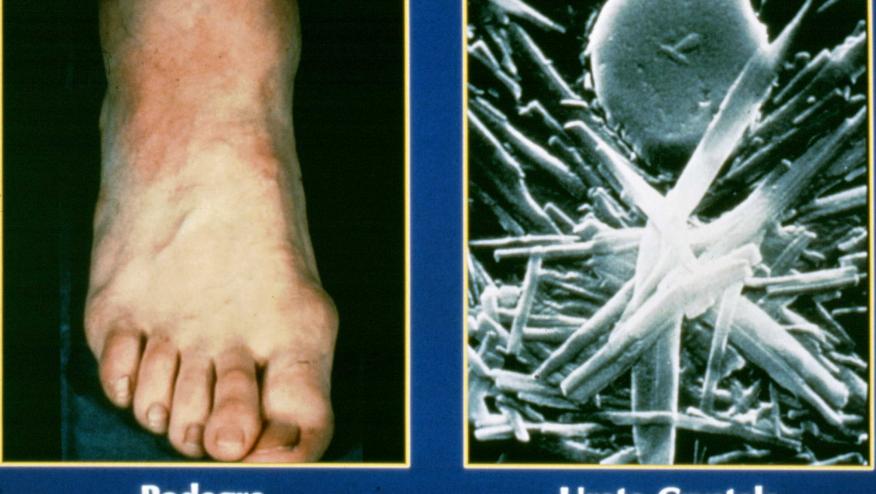Not All Hyperuricemia Leads to Gout Save

Dalbeth and colleagues studied 4 large prospective cohorts and found that rising levels of serum uric acid (SUA) leads to a non-linear increased risk of incident gout, but only half of those with SUA ≥10mg/dL developed clinically evident gout.
Researchers analyzed four prospective cohorts (Atherosclerosis Risk in Communities Study, Coronary Artery Risk Development in Young Adults Study, and both the Original and Offspring cohorts of the Framingham Heart Study) to assess the correlation between baseline SUA and the risk of incident gout.
There were 18 889 gout-free participants followed for a mean 11.2 years of follow-up.
The cumulative 15 year incidence of new gout cases varied according to baseline SUA:
- SUA 6 mg/dL = 1.1% (0.9 to 1.4)
- SUA ≥10 mg/dL = 49% (31 to 67)
The adjusted hazard ration for incident gout was:
- SUA 6.0-6.9 mg/dL - HR 2.7
- SUA 7.0-7.9 mg/dL - HR 6.6
- SUA 8.0-8.9 mg/dL - HR 15
- SUA 9.0-9.9 mg/dL - HR 30
- SUA ≥10 mg/dL - HR 64.
While hyperuricemia plays a significant role in causing gout, there are other factors, over time that along with prolonged hyperuricemia are necessary to lead to gout.








If you are a health practitioner, you may Login/Register to comment.
Due to the nature of these comment forums, only health practitioners are allowed to comment at this time.